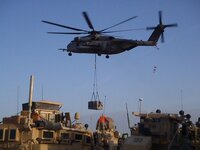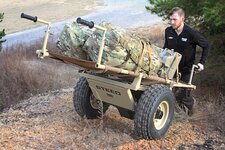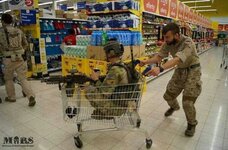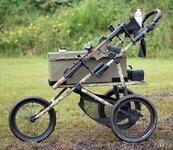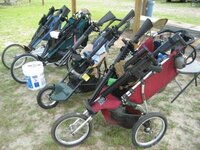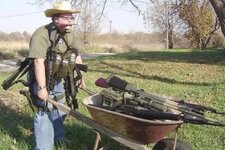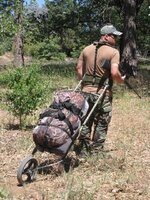- Messages
- 2,059
- Reactions
- 2,553
The standard hiking/backpacking pack is designed to just barely store all the keep you alive items like a sleeping bag, pad, food, tent/tarp, etc. I have mine very minimalist, even with just 3.5 lbs for shelter (sil nylon tarp and 30 degree sleeping bag and I cannot fit ANY tactical gear in there. Realistically I have to carry yet ANOTHER bag with other tactical gear like chest rigs, "duty/battle" belt, boom stick, etc. Then I have a SEPARATE pack to serve as a tactical pack which would be filled with night vision, water, batteries, poncho, a meal, trauma kit, etc.
I think the VAST majority of preppers never really go out and train with their gear. Realistically if you do, you'd be taking several packs and realize the idea of bugging out on foot with all this gear is impossible. I'm always trying to find ways to pair things down and getting a smaller platform but the more I go out and weed things out the more I find things that are needed and added. Like knee and elbow pads. Several times my friend and I have taken some bad dings to our knees hitting the dirt quickly.
And I realize not everyone will have night vision goggles or thermal imaging systems (I go equipped) but these are huge force multipliers. Chest rigs and duty belts are a must to be able to carry a pack otherwise your pistol and magazine carrier will catch on the pack and be very uncomfortable.
So what solution has everyone come down to? Personally I'm debating taking the backpack gear and putting it in a bin in the car, as if I have to go on foot, I'm taking the tactical/assault pack and boom stick/chest rig/duty belt bag and going, leaving the backpacking gear behind, as I wouldn't be able to carry it all.
Bugging out is not like being a solider in Ramadi. You don't have a base to go back to for rest and food. You literally have to take all of it with you and carry it..so realistically you're carrying more gear than that situation.
I think the VAST majority of preppers never really go out and train with their gear. Realistically if you do, you'd be taking several packs and realize the idea of bugging out on foot with all this gear is impossible. I'm always trying to find ways to pair things down and getting a smaller platform but the more I go out and weed things out the more I find things that are needed and added. Like knee and elbow pads. Several times my friend and I have taken some bad dings to our knees hitting the dirt quickly.
And I realize not everyone will have night vision goggles or thermal imaging systems (I go equipped) but these are huge force multipliers. Chest rigs and duty belts are a must to be able to carry a pack otherwise your pistol and magazine carrier will catch on the pack and be very uncomfortable.
So what solution has everyone come down to? Personally I'm debating taking the backpack gear and putting it in a bin in the car, as if I have to go on foot, I'm taking the tactical/assault pack and boom stick/chest rig/duty belt bag and going, leaving the backpacking gear behind, as I wouldn't be able to carry it all.
Bugging out is not like being a solider in Ramadi. You don't have a base to go back to for rest and food. You literally have to take all of it with you and carry it..so realistically you're carrying more gear than that situation.







